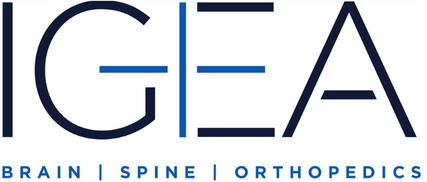BALLOON ANGIOPLASTY AND STENT SPECIALISTS IN NEW JERSEY & NEW YORK
Sudden numbness, trouble speaking and an abrupt loss of vision and balance are immediate danger signs of a stroke. A stroke is an extremely serious and delicate situation in which medical help is strongly needed. The effects caused by this
brain condition can bring you and your family stress and anguish. Seek the right treatment for this problem with us. A balloon angioplasty and stent procedure can be your prime option for better health.
THE DANGERS OF STROKES
A stroke occurs when brain cells begin to die due to a lack of oxygen. This is usually caused by a blockage in an artery that prevents blood from entering the brain (ischemic stroke) or the sudden rupture of an artery (hemorrhagic stroke). There are several risk factors for suffering a stroke, which include:
- Age
- Being male
- High blood pressure and cholesterol
- Smoking cigarettes
- Diabetes
- Obesity
- Family history of stroke
- A previous stroke
Although these are prevalent risk factors, a stroke can affect anyone at any time. Some of these risk factors are out of your control but a healthy diet and exercise can help prevent a stroke. Knowing the symptoms is a pivotal part in preventing further damage such as cognitive loss, severe functional disability, and death. The symptoms of a stroke include:
- Numbness or weakness in the face, arm or leg
- Confusion
- Trouble speaking and understanding speech
- Loss of vision
- Abrupt dizziness or headaches
- Decreased equilibrium
HOW DOES BALLOON ANGIOPLASTY AND STENT WORK?
IGEA’s Balloon Angioplasty and Stent is a minimally invasive procedure that does not require large incisions. This balloon angioplasty procedure has generally replaced open surgeries due to its minimal scarring and shortened recovery time. Some patients are even allowed to return home a day after the balloon angioplasty procedure has been performed and can continue with everyday activities in a span of just a few days.
When Balloon Angioplasty and Stent begins, a neurosurgeon will make a small incision on the body (usually at the groin area) and insert a small balloon attached to a catheter. The neurosurgeon will then guide the catheter to the damaged artery and expand the balloon to clear the blockage that prevents blood flow. A small scaffold called a stent may then be placed to permanently hold the artery open, although this isn’t always required.
ARE YOU A CANDIDATE FOR BALLOON ANGIOPLASTY?
An open surgery known as endarterectomy is usually the first choice in treatment for most stroke patients. Balloon Angioplasty and Stent are usually reserved for people who are too weak to undergo an endarterectomy, have had neck surgery in the past, or whose damaged artery is in narrow. Upon finding medical assistance, your neurosurgeon will help you decide if the safest way to treat your stroke.
THE RISKS OF BALLOON ANGIOPLASTY
As with any surgical procedure, a Balloon Angioplasty and Stent has risks that may vary by patient. Some of these risks include more blockage of the artery over time, seizures and heart attack. Your balloon angioplasty and stent surgeon will discuss the risks and all possible outcomes of the procedure with you and your family.
BALLOON ANGIOPLASTY & STENT HELP IS HERE
Your health and safety are what we strive for. Our balloon angioplasty and stent surgeons will do everything possible to provide you with the proper care and treatment necessary to overcome your brain condition. Contact our main office in New Jersey today for more information about our Balloon Angioplasty and Stent treatment.

